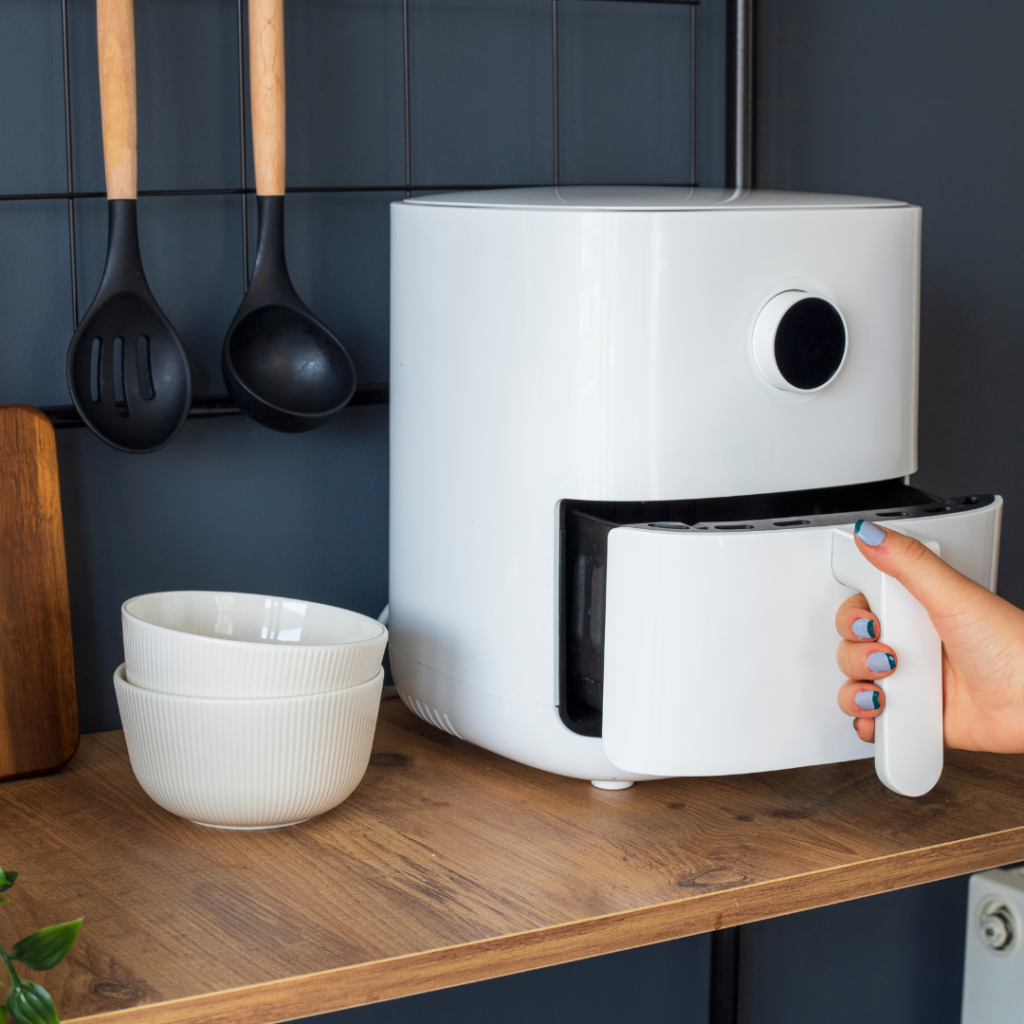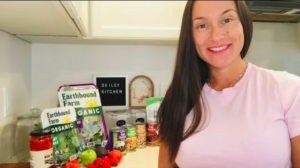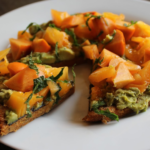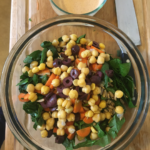
Ready to learn how to cook at home? In this post I share how to get started as a home cook. Keep reading to watch home cooking video tutorials and learn what you need to get started this year.
Dailey Kitchen YouTube channel
We host a fun and informative cooking channel on YouTube where you can learn how to cook at home.
Jordan is a firefighter who loves to cook while on duty and off. Veronica is a professional chef with over 20 years experience teaching cooking skills to both professional chefs and home cooks.
On our YouTube channel you can learn how to cook everything from meat to vegan!
Why learn how to cook at home?
Learning to cook at home is a valuable skill that offers many benefits, both practical and personal. Here are several compelling reasons to start cooking for yourself:
1. Healthier Eating
- Control Over Ingredients: When you cook at home, you know exactly what’s going into your food. You can avoid excess sugar, salt, unhealthy fats, and preservatives commonly found in processed and restaurant foods.
- Portion Control: At home, you can regulate portion sizes, which can help you eat healthier and avoid overeating.
- Customized to Your Needs: Whether you’re vegetarian, gluten-free, or following a specific diet, cooking at home allows you to tailor meals to your dietary preferences or health goals.
Beginners Guide to Daily Dozen Meal Prep
2. Cost Savings
- Cheaper Than Eating Out: Preparing meals at home is significantly cheaper than ordering takeout or dining at restaurants. Buying ingredients in bulk also saves money in the long run.
- Less Waste: When you cook at home, you can buy only what you need and use leftovers, reducing food waste.
$50 week grocery budget for 1 person at Walmart
3. Developing Practical Skills
- Self-Sufficiency: Being able to cook means you don’t have to rely on others for your meals. It’s a life skill that can serve you well in many situations, whether you’re living alone, on a budget, or want to impress guests with your cooking.
- Problem-Solving and Creativity: Cooking teaches you to be resourceful, experiment with flavors, and adapt recipes. It helps build creativity and the confidence to try new things in the kitchen.
Here’s Veronica’s tutorial for how to chop onions:
4. Better Relationship with Food
- Mindful Eating: When you cook your meals, you’re more likely to be aware of what you’re eating and appreciate it more. You can also connect more deeply with the process of making food, from prepping to cooking.
- Less Reliance on Processed Foods: Cooking at home reduces your dependence on highly processed, pre-packaged foods, which are often unhealthy and lack nutritional value.
Combat sugar cravings with a Daniel Fast
5. Personal Satisfaction and Enjoyment
- Sense of Accomplishment: There’s a real sense of pride in making a meal from scratch. Successfully preparing a dish, especially one you’ve never made before, can be deeply satisfying.
- Creativity and Experimentation: Cooking allows you to explore different flavors, cuisines, and techniques. It’s fun to experiment and make a dish your own by adjusting seasonings or adding new ingredients.
6. Social and Family Bonding
- Quality Time: Cooking at home can be a shared experience with family or friends, strengthening bonds. Whether you’re cooking together or hosting a dinner party, food brings people together.
- Teaching Moments: If you have children, cooking at home is a great opportunity to teach them valuable life skills, and it can foster a healthy relationship with food from a young age.
7. Better Control Over Meal Timing
- Flexibility: When you cook at home, you control when meals are prepared, meaning you can eat on your own schedule, rather than relying on restaurants with limited hours or delivery services.
- Faster and More Convenient: With a little practice, cooking at home can be quicker than going out or ordering in. Plus, it can be a way to make meals in bulk (like meal prepping) for the week ahead.
8. Environmentally Friendly
- Less Packaging Waste: Takeout food often comes with single-use plastics and excessive packaging, which contributes to waste. Cooking at home reduces this kind of waste.
- Less Carbon Footprint: Many restaurant meals are transported long distances, while home-cooked meals use locally sourced ingredients that may have a lower carbon footprint.
9. Enjoyment of Food
- Personalized Taste: You can adjust seasoning, spice levels, or textures to match your exact preferences. Homemade food always tastes better when it’s made just the way you like it!
- Pride in Creating: The joy of eating something you’ve created from scratch can make the food taste even better. The process of cooking, smelling the aromas, and then enjoying the final product can be a deeply rewarding experience.
10. Cultural and Culinary Exploration
- Explore New Cuisines: Cooking at home allows you to experiment with recipes from different cultures and try ingredients you might not find in restaurants. You can learn new techniques, from baking bread to making sushi, and bring global flavors into your kitchen.
- Food Education: Cooking teaches you about different ingredients, techniques, and cultural food traditions. It’s an opportunity to expand your culinary knowledge and skills.
11. Independence and Confidence
- Take Control of Your Health: Being able to cook gives you the autonomy to decide what goes into your body and when, rather than relying on food delivery services or store-bought options that may not be the healthiest.
- Improved Confidence: As you learn to cook, you build confidence in your abilities, not just in the kitchen, but in other areas of life as well. It’s a reminder that you have the power to create and control things in your life.
Learning to cook at home offers practical, emotional, and financial benefits. It’s a skill that enriches your life in many ways, from healthier eating to the joy of creativity and connection with others. Whether you’re cooking to save money, eat better, or simply for the satisfaction of a homemade meal, the rewards of cooking at home far outweigh the effort it takes to learn.
Learn how to cook at home in 2025
Learning to cook at home is a great way to save money, eat healthier, and gain a valuable life skill. Here’s a step-by-step guide to get you started in 2025
1. Equip Your Kitchen
You don’t need a fancy setup, but having a few essential tools will make cooking easier:
- Knives: A chef’s knife, a paring knife, and a serrated knife.
- Cutting board: A large, sturdy surface.
- Cookware: A good non-stick skillet, a saucepan, and a larger pot (like a Dutch oven).
- Basic utensils: Wooden spoon, spatula, tongs, and a whisk.
- Measuring cups and spoons: For accuracy, especially in baking.
- Mixing bowls: For prepping ingredients.
- Can opener, colander, and peeler.
Here’s Veronica’s video for the 10 best kitchen tools for meal prep:
2. Start with Simple Recipes
Pick a few beginner-friendly recipes to practice your skills. Some easy dishes to start with:
- Stir-fries: Simple, quick, and easy to customize with vegetables, protein (like chicken or tofu), and sauces.
- One-pot meals: Things like chili, soups, or pasta dishes are easy to prepare and cleanup is minimal.
- Sheet pan meals: Roast vegetables, protein, and carbs all on one pan in the oven.
- Salads: Great for getting comfortable with chopping and experimenting with dressings.
3. Learn Basic Cooking Techniques
These foundational skills will help you with almost any recipe:
- Sautéing: Cooking food quickly in a little bit of oil or butter over high heat.
- Boiling: Cooking ingredients in water or broth (great for pasta, rice, or vegetables).
- Baking: Cooking in the oven—start with something simple like roasted vegetables or baked chicken.
- Roasting: Cooking in the oven at a higher temperature to develop flavors and textures.
- Chopping and dicing: Good knife skills will make prep faster and safer.
Here’s Veronica’s video tutorial for how to cook rice in a rice cooker:
4. Understand Flavor Building
Learning how to layer and balance flavors can elevate your dishes:
- Seasoning: Salt, pepper, and herbs like basil, thyme, or oregano are key. Don’t be afraid to taste as you go.
- Acidity: A little bit of vinegar, lemon juice, or lime can brighten up dishes.
- Fat: Oils, butter, or creamy ingredients help carry and amplify flavors.
- Sweetness: A dash of sugar, honey, or fruits can balance out savory flavors.
5. Practice Meal Prep
Meal prepping can make cooking throughout the week much easier:
- Cook grains (like rice, quinoa, or pasta) in batches.
- Pre-chop vegetables or protein for quick stir-fries or salads.
- Prepare simple sauces, dressings, or marinades in advance.
Here’s Veronica’s tutorial for how to meal prep vegetables quickly:
6. Start with Simple Ingredients
When you’re first starting, don’t worry about complex or obscure ingredients. Use things that are easy to find and versatile:
- Vegetables: Carrots, onions, bell peppers, spinach, potatoes.
- Proteins: Chicken breasts, ground meat, tofu, or eggs.
- Grains: Rice, pasta, quinoa.
- Canned goods: Beans, tomatoes, broth.
- Spices: Salt, pepper, garlic powder, paprika, cumin.
7. Embrace Mistakes
You don’t have to get everything perfect at first! Mistakes are part of the learning process. If a dish doesn’t turn out as planned, figure out what went wrong and adjust next time.
8. Watch Tutorials & Learn from Others
There are tons of online resources—YouTube channels, food blogs, or even cooking apps. Watching someone else cook can help you visualize techniques and understand timing.
9. Have Fun with It
Cooking doesn’t have to feel like a chore. Experiment with new flavors, adjust recipes to your liking, and remember to enjoy the process!
Further reading:





